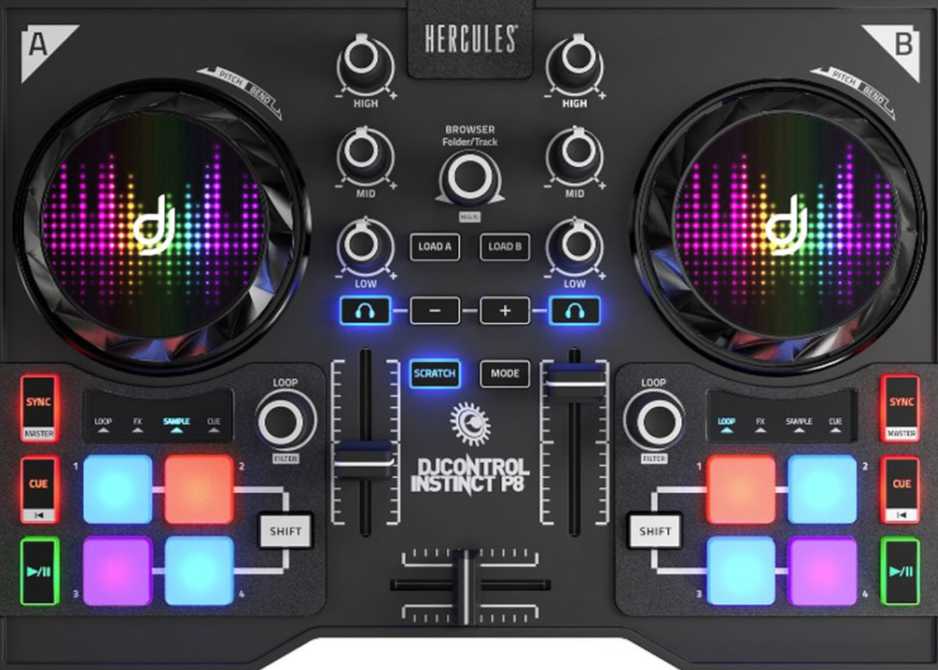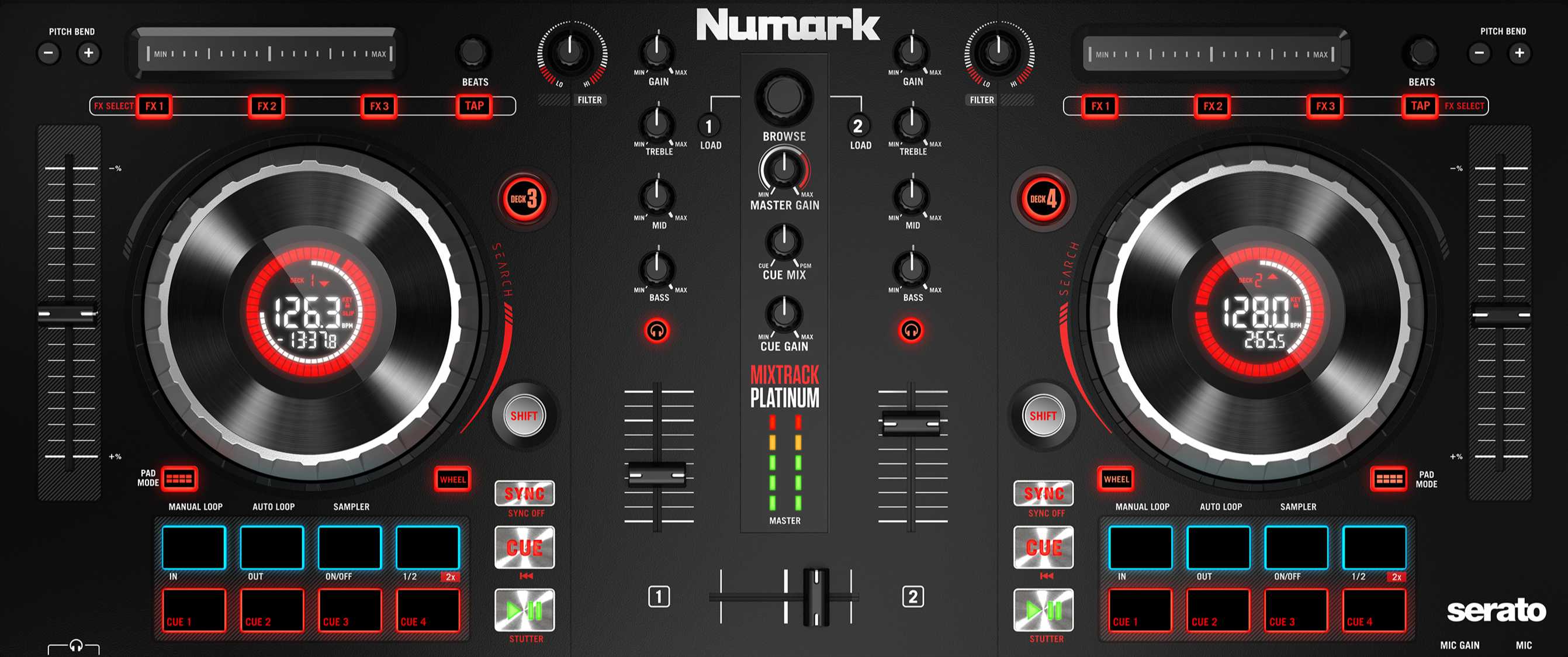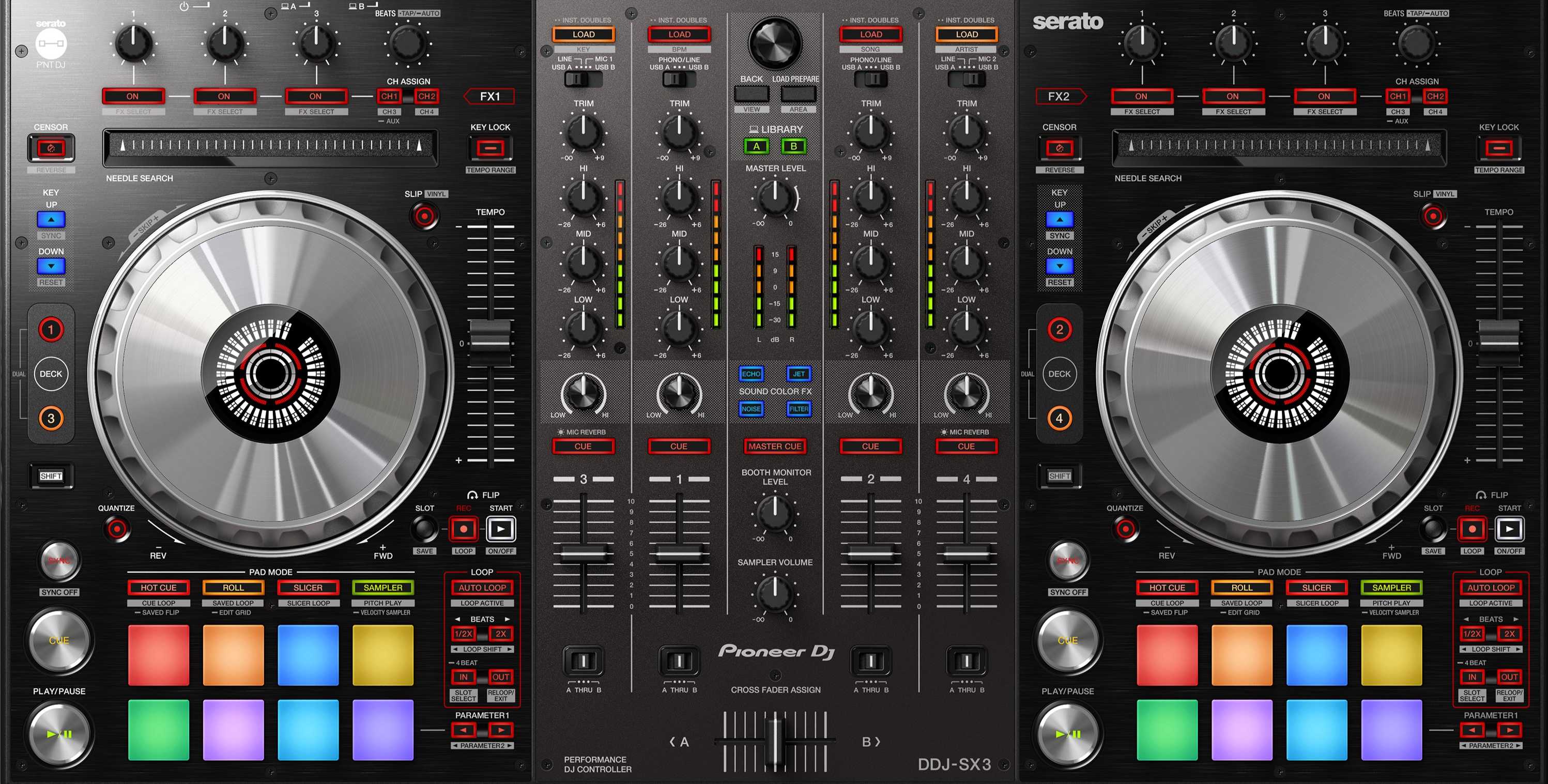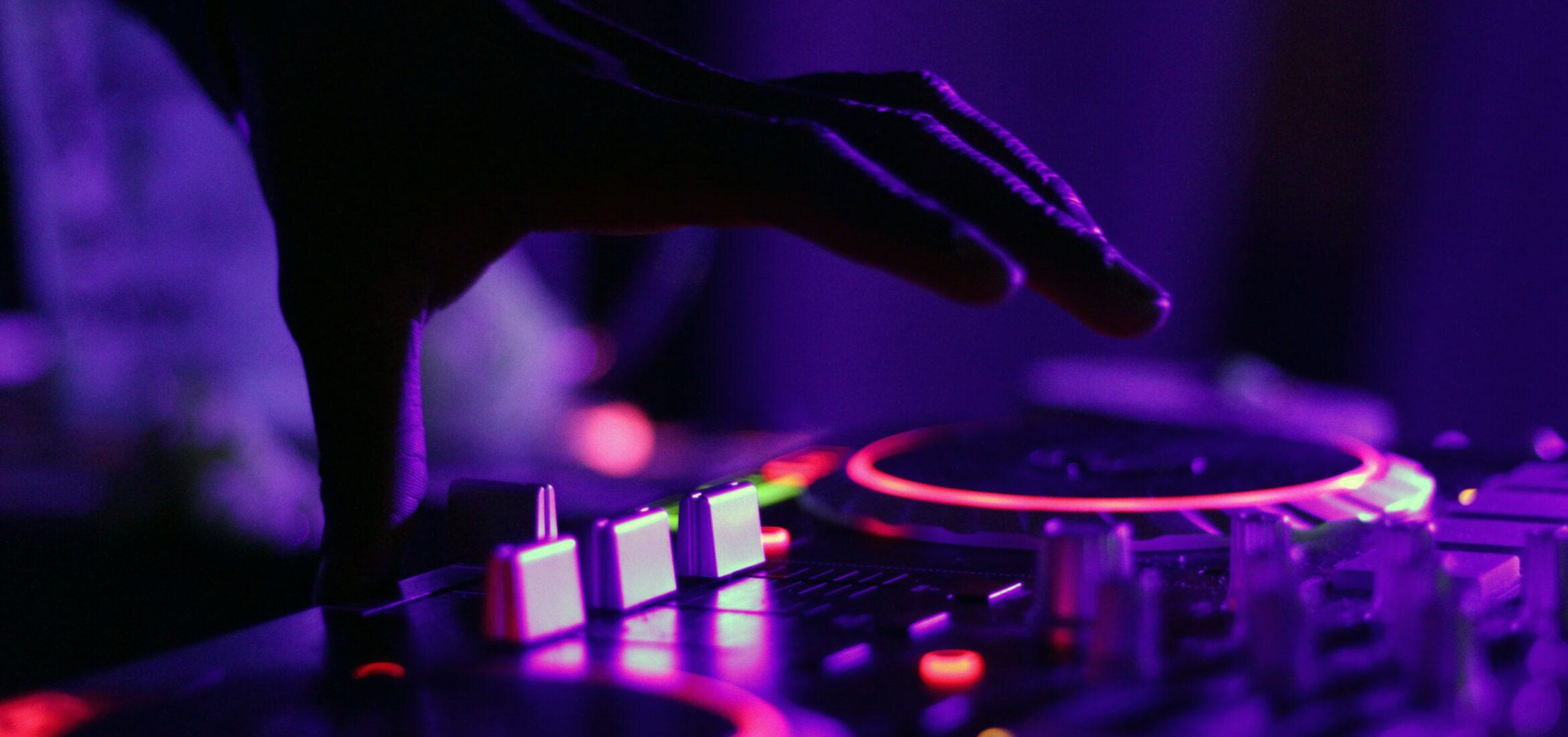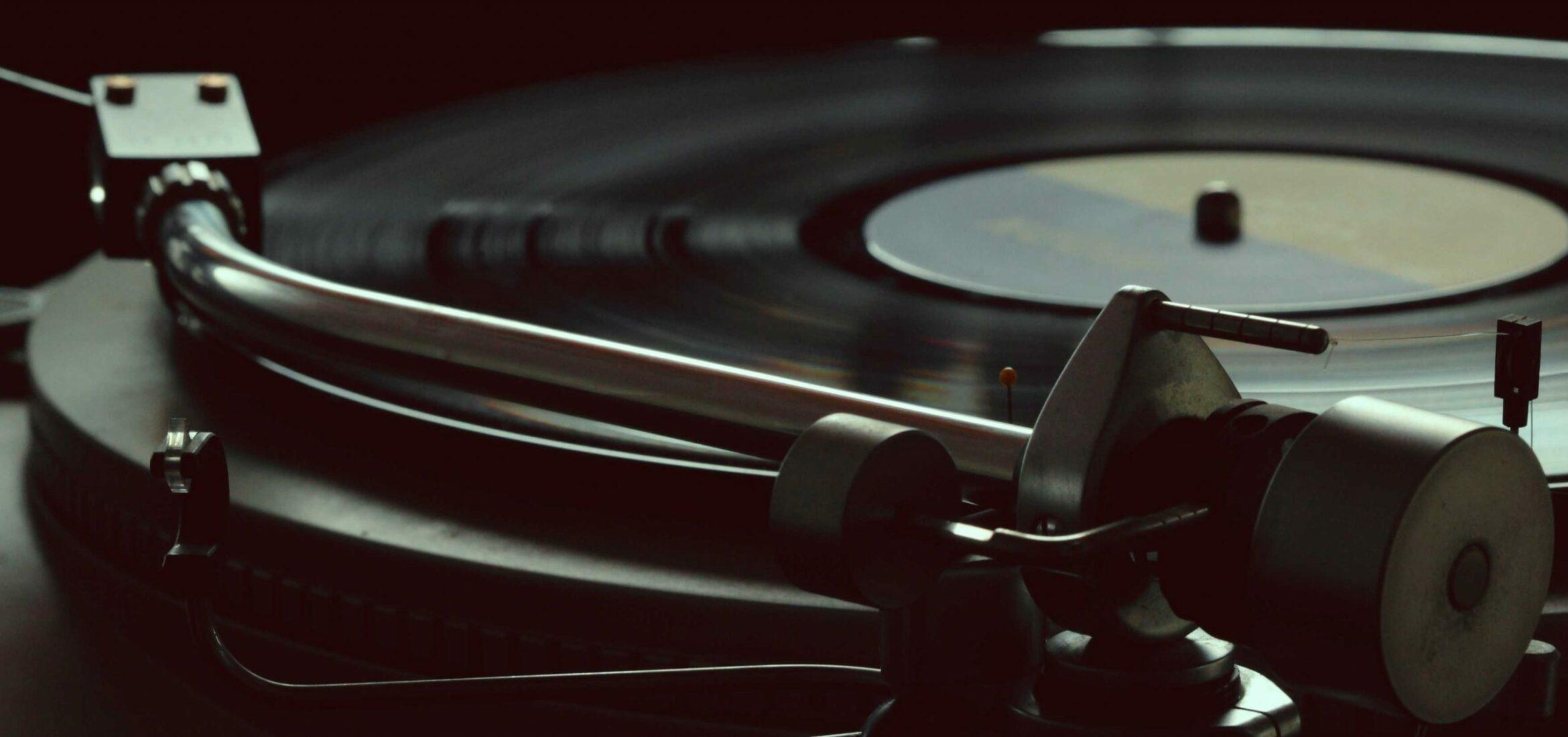In a recent article, we looked into the world of Turntables. For those of you who are interested in becoming a DJ who spins old school vinyl, that article will be for you. However, if you’re more interested in what the digital age has to offer then fear not. Today, we will cover how to pick your first DJ Controller. We’ll look at some of the distinct differences between the different types of audio equipment and I’ll make some suggestions on some bits of kit you might want to look into.
Controllers VS CDJs
So you’ve set your sites on some form of digital DJing. The first and most important thing you need to decide on is whether you’re interested in a DJ controller or CDJs. In the early days, the distinct difference between the two was really highlighted in the name. Controllers allow you to physically control DJ software, providing a more tactical and authentic approach to DJing. CDJs operated more like turntables but for, you guessed it, CDs! You could simply pop a CD into the reader and mix exactly how you would on a vinyl turntable.
These days, CDJs have moved on a long way, thanks specifically to Pioneer DJ, who have really pushed the envelope with their equipment. A large number of their CDJs now also accept USB memory drives as well as being compatible with software like Serato. CDJs have become more like controllers as the years have gone on. They’ve slowly replaced the Technics 1210 as the standard in most nightclubs worldwide and they are generally accepted as the standard for all DJs.

Choosing a Dj Controller
So now you know the key differences, it’s time to decide which is the route for you. Typically, controllers tend to be smaller, lighter and cheaper which makes them more appealing for most beginner DJs. The down-side, however, is that when you move into playing in venues, it can come as quite a shock having to suddenly (and quickly) get used to using CDJs. I’ve seen too many DJs have to abandon their sets before they’ve even started because they simply don’t know how to use CDJs. It’s a real shame but it is a harsh reality.
Static DJ Controllers
The first option we’re going to look at is the most common. A static DJ controller utilises rotary encoders to adjust controls on a screen. They’re pretty much exactly like MIDI controllers. You turn a knob or adjust the jog wheel and the same action happens within the software that is playing the song. The advantages of a static DJ controller are many. They tend to be the cheapest option which is great when you’re first getting into DJing. Also, the fact that they pair up with software means that the controller is the only thing you have to buy.
Another great thing about controllers is the software itself. A physical device only has so much real estate and therefore can’t be loaded with buttons and switches that do all sorts of clever things. Software, by its virtual nature, it’s essentially limitless. This means that you can have tons of great effects and samples loaded up to spice up your sets.

The downside here is that many of these devices are quite flimsy and badly designed. This means cheap components that are likely to wear out and a lot of system latency. This makes things like manual cueing and scratching very difficult to learn. If you’re looking to just fade tracks together in a convincing fashion, something like this will be great. If you want to really get into the technical elements of DJing, you’d be better off with something more ‘real-time’.
‘Real-Time’ Dj Controllers
Now I use the term ‘real-time’ loosely. A DJ controller like this doesn’t actually have moving parts but the low latency, high-quality design means that things like scratching and cueing are totally doable. These controllers also tend to come with a better, large format design with decent sized jog wheels. This makes them much easier to use and far more similar to real CDJs. Helpful if you might ever have to use CDJs for a live set!
This design always comes at a higher price point that static DJ controllers but the extra money spent is well justified. The build quality is way better and the extra features that you’d need software for usually are actually included in the physical product. Things like hot cue pads for sampling as well effects control knobs are abundant which means you can act faster and do some real showing off. This is about as close to the real thing as your going to get without needing vinyl, CDs or a memory stick.

CDJs
Finally, we come onto the CDJ. Universally recognised as the standard in today’s DJing world, CDJs are the one bit of kit that most people who would love to have but can’t quite justify. There are plenty of companies that make CDJs and they are all well built and suit their price point. However, it’s Pioneer DJ that really has the monopoly on the DJing market. Any nightclub or venue worth its salt will have a Pioneer setup and for good reason. The build quality and sheer smoothness of their design are unmatchable. Not only this but the interconnectivity with various devices is invaluable in the commercial DJing world. Being able to turn up to a booking with your laptop and know for a fact that the CDJs will work with your software and that you know their layout is what has cemented Pioneers equipment.
As previously mentioned, despite it being in the name you don’t always need CDs to use CDJs. Many of the newer models are compatible with external memory devices making it even easier to bring music with you to shows. Turning up with 500 tracks on vinyl was a nightmare. CDs made this easier but you had to have a pretty flawless filing system to be able to navigate it all. Rocking up to the club with two memory sticks, all formatted and catalogued, and a set of headphones is just a dream.
I won’t go into too much detail later on when it comes to CDJs simply because of the crazy price of them. However, if you’re interested in taking a look at what you can expect to see in nightclubs, check out the Pioneer CDJ-900 Nexus and Pioneer DJM-750 Mk2.

So What DJ Controller Should You Buy?
As we’ve just seen, there is quite a lot of choice. From compact, cheap static controllers all the way up to industry standard CDJS, you’re spoilt for choice. There really is something for everyone and it has never been easier to get into the DJing world. Below, I’ll outline a few of my favourite bits of kit that any beginner could check out.
Hercules Instinct P8 – $99
The Instinct P8 is a newer version of the first DJ controller that I ever owned. Super compact and at a very reasonable price point, this is a great little device to get started with. It’s perfect for taking to house parties or just practising at home. It also lets you learn things like beat matching, fading and EQing with ease. It’s got a few hot cue pads built in as well. This means you can have a go at cueing and remixing tracks live as you go.
Numark Mixtrack Platinum – $280
If you’re looking for something a bit bigger and with sturdier build quality, Numark makes some top notch products that are still affordable. The mixtrack platinum offers more space, more controls and more cue pads. Not only this but it offers the ability to control four channels during any mix as well having jog wheel displays that show timings for the tracks your playing. Super helpful when you’re caught up in a mix with three or four songs and you’re trying to sync everything up for a big drop!
Pioneer DDJ-SX3 – $1150
Our final controller comes from none other than Pioneer DJ. It really is the next best thing to owning a pair of CDJs. The DDJ-SX3 is a ting of engineering genius that looks and feels beautiful. The number of features that have been piled into this low-latency DJ controller makes it a seriously viable contender for any nightclub setup. Four channel control, direct inputs for microphones and other instruments and even a dual USB slot allowing two laptops to be hooked up simultaneously for quick switchovers makes the DDJ-SX3 a truly amazing DJ controller. If you’ve got the funds and you don’t want to take the CDJ route, this is the one to buy!
TL;DR
If vinyl and turntables aren’t your things but you still want to become a DJ, controllers are for you. Depending on what you’re looking for, space, and budget, there is a lot of choices. Small static DJ controllers are a great entry. They are compact and cheap whilst still providing the tools you need to learn the basics. Perhaps you want something with better build quality and more features? Look into low latency ‘real-time’ controllers for more control and functionality. If you’ve got the funds to justify it, CDJs really are the best option these days. With their ability to support external memory devices and software, they really are the ultimate DJ Controller!
Om författaren

Tim Dunphy
Ljudtekniker och specialiserad innehållsförfattareÖver 10 års erfarenhet av ljudbranschen, från att rulla ihop XLR-kablar till att mastra album. Jag är självlärd och behåller mina tillgångar i Bitcoin. Vad mer behöver du veta!?
Lämna en kommentar
Logga in för att kommentera

